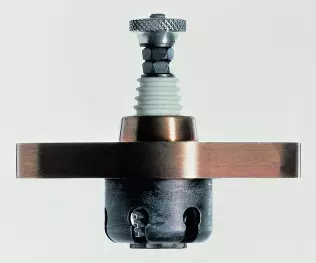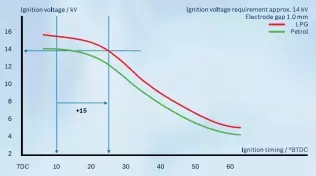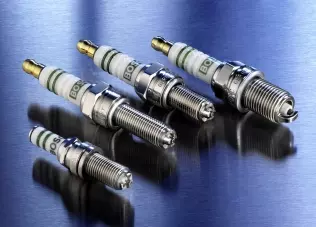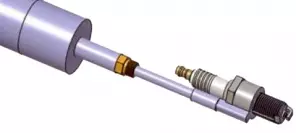- Main page
- Search
- Up to date
- Products
- Technology
- Vehicles
- Video
- Conversion Payback Simulator
Port Injection - Conversion Payback Simulator
Direct Injection - Conversion Payback Simulator
Diesel - Newsletter
Spark plugs and LPG
 loading results...
loading results...
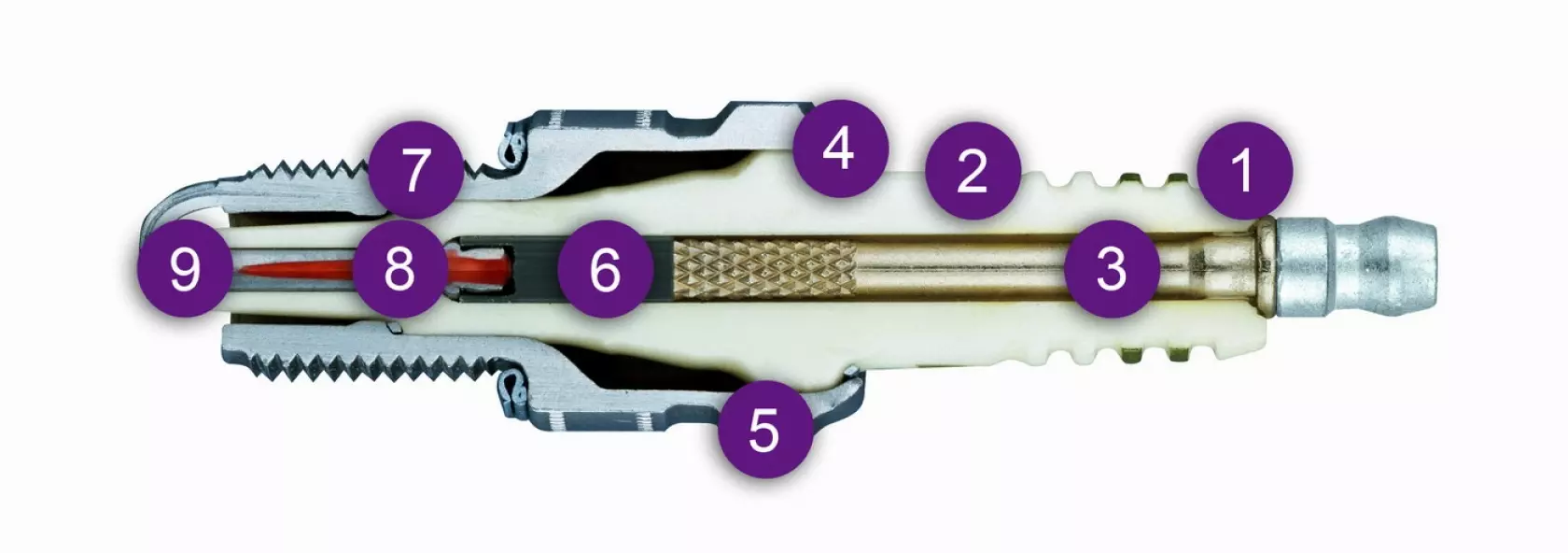 1 – ribbed profile on the end of the insulator works as a barrier against surface spark-overs, 2 – the insulator made of aluminum oxide isolates the spark plug connector and central electrode from the housing, 3 – steel spark plug connector, 4 – the inner sealing ring serves to affix and seal the insulator, 5 – steel housing is protected against corrosion and the thread is used to attach the spark plug in the cylinder head, 6 – the glass alloy, which conducts current and temperature, connects the central electrode to an electric connector, 7 – outer seal ring seals the plug in the hole of the cylinder’s head, 8 – the central electrode includes a nickel-chromium alloy with a copper core, 9 – the ground electrode. Its position, number and geometry affect the properties and use of spark plugs, as well as their durability
1 – ribbed profile on the end of the insulator works as a barrier against surface spark-overs, 2 – the insulator made of aluminum oxide isolates the spark plug connector and central electrode from the housing, 3 – steel spark plug connector, 4 – the inner sealing ring serves to affix and seal the insulator, 5 – steel housing is protected against corrosion and the thread is used to attach the spark plug in the cylinder head, 6 – the glass alloy, which conducts current and temperature, connects the central electrode to an electric connector, 7 – outer seal ring seals the plug in the hole of the cylinder’s head, 8 – the central electrode includes a nickel-chromium alloy with a copper core, 9 – the ground electrode. Its position, number and geometry affect the properties and use of spark plugs, as well as their durability 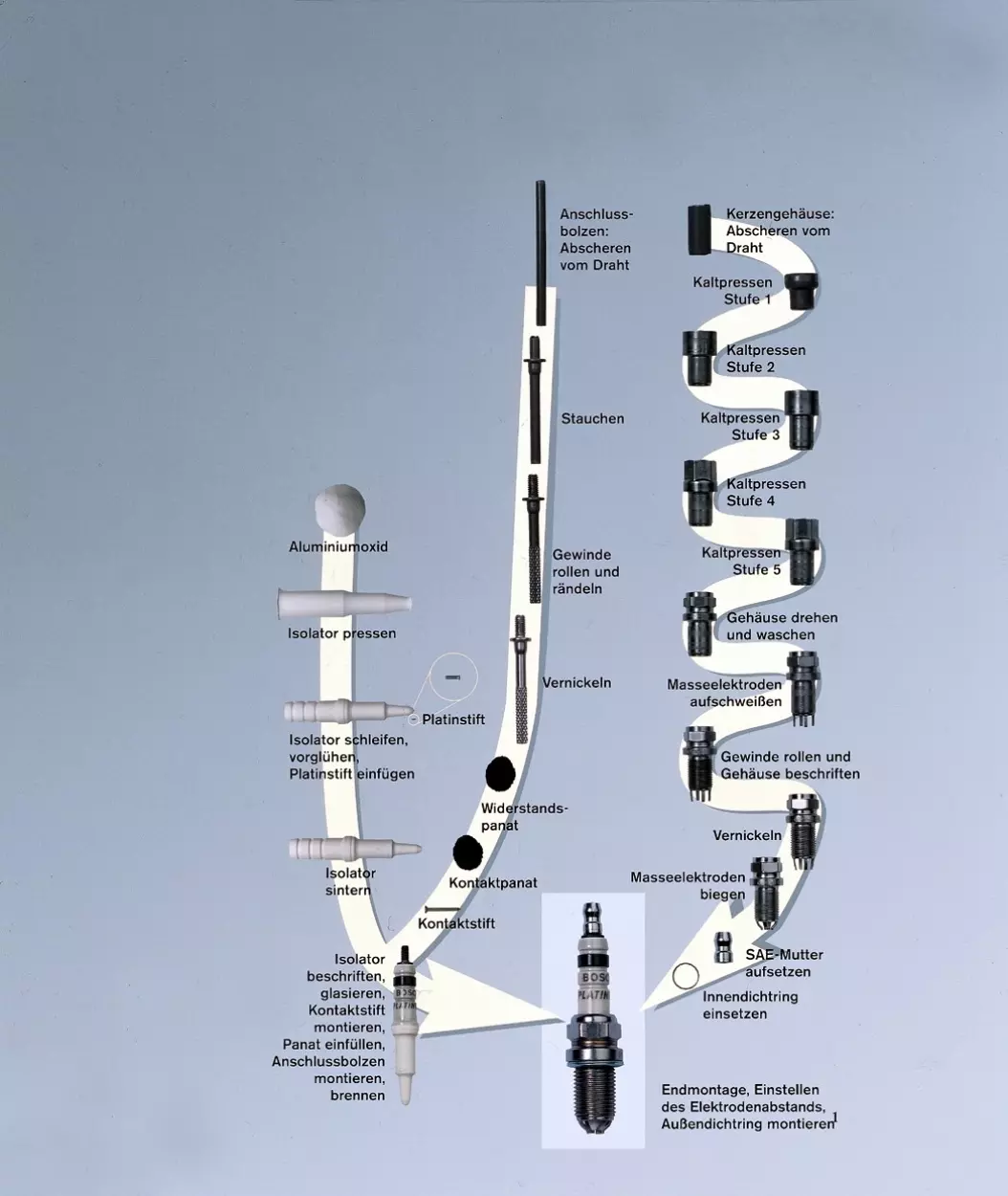 Manufacturing a spark plug involves a long list of operations
Manufacturing a spark plug involves a long list of operations 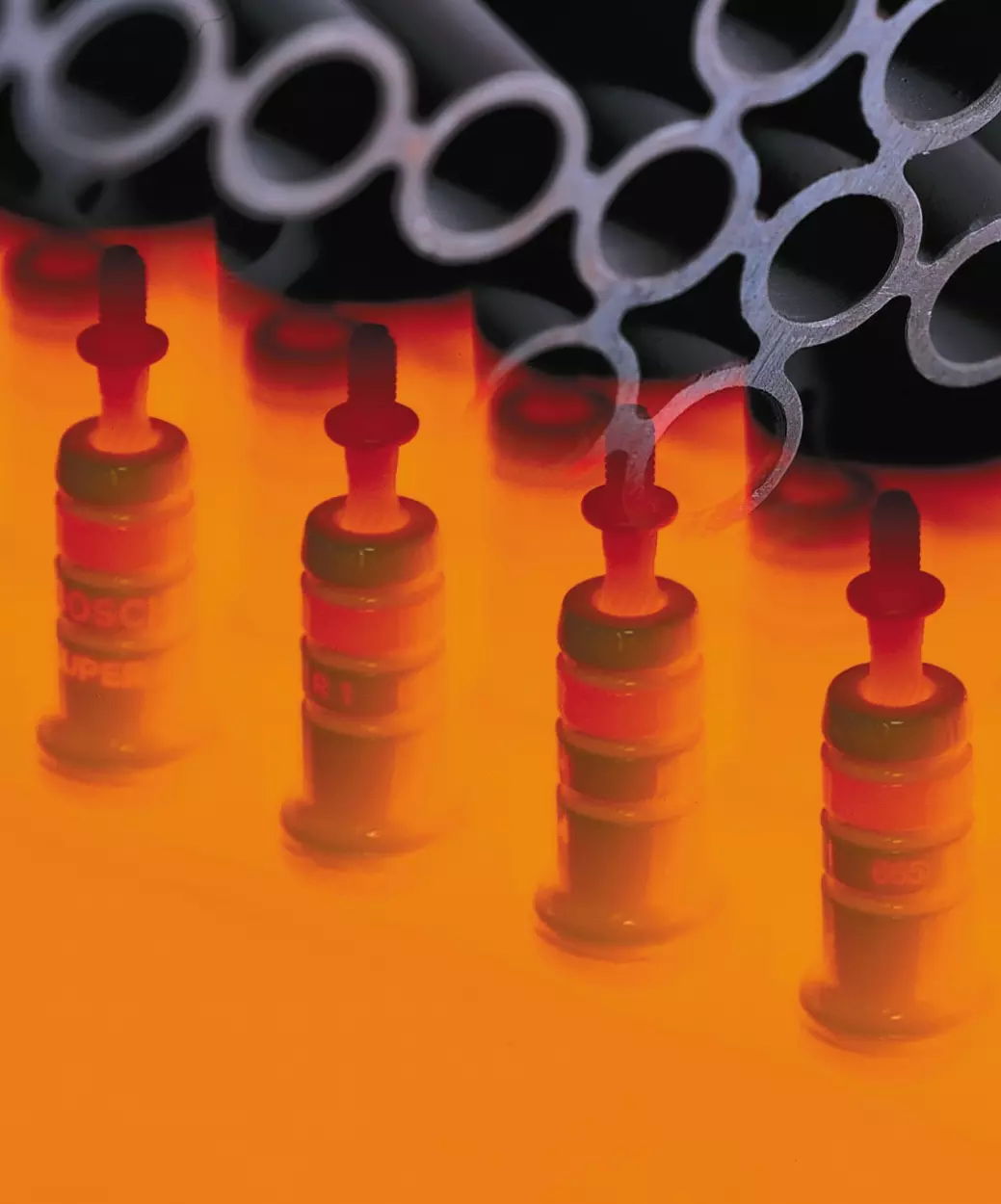 Ceramic plug insulators during burning
Ceramic plug insulators during burning 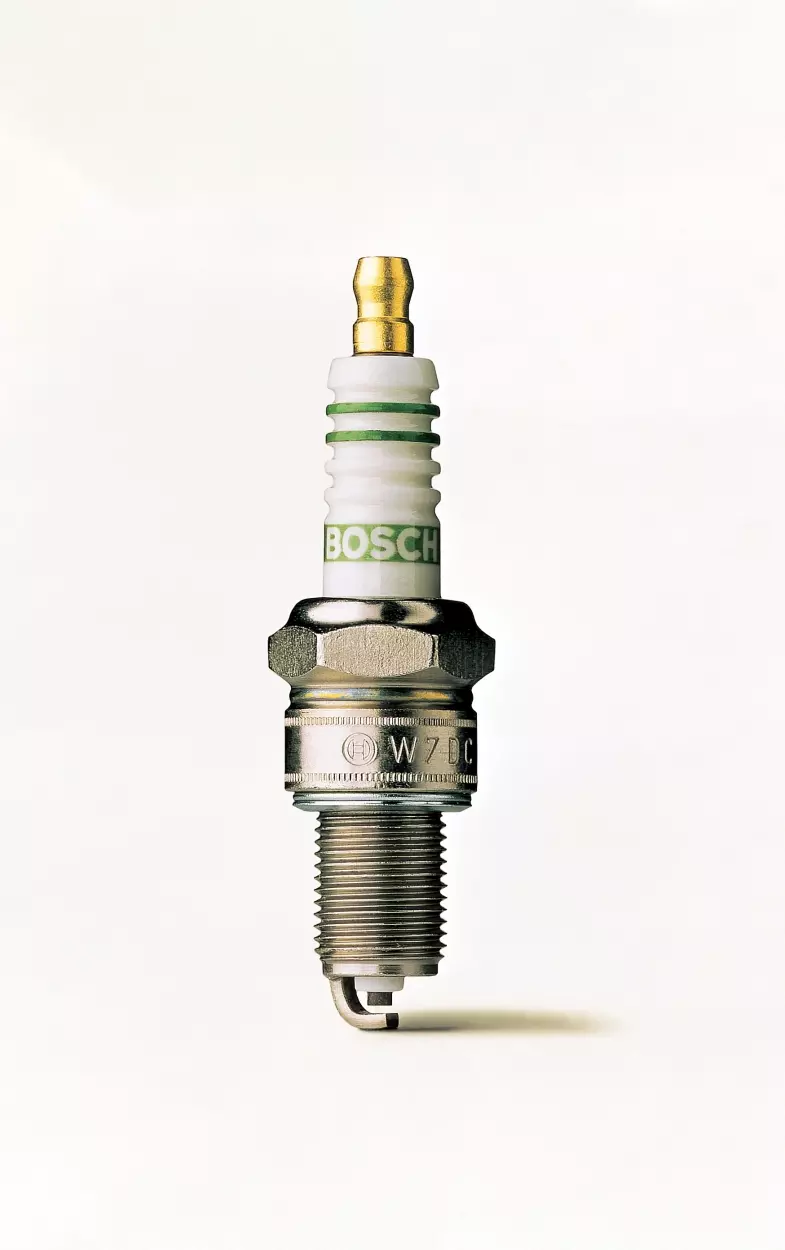 Bosch Super plugs have copper cores in both electrodes
Bosch Super plugs have copper cores in both electrodes 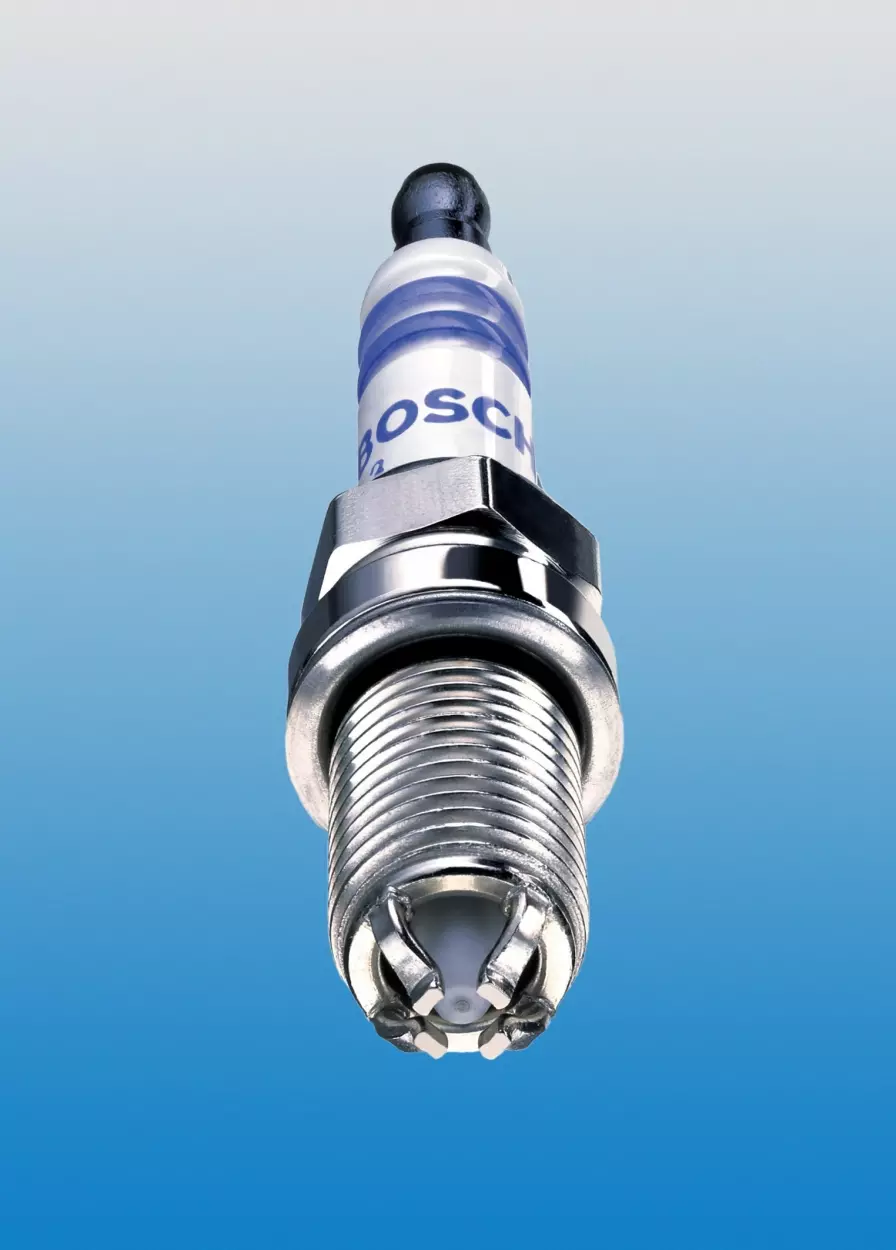 Bosch Super 4 spark plug
Bosch Super 4 spark plug 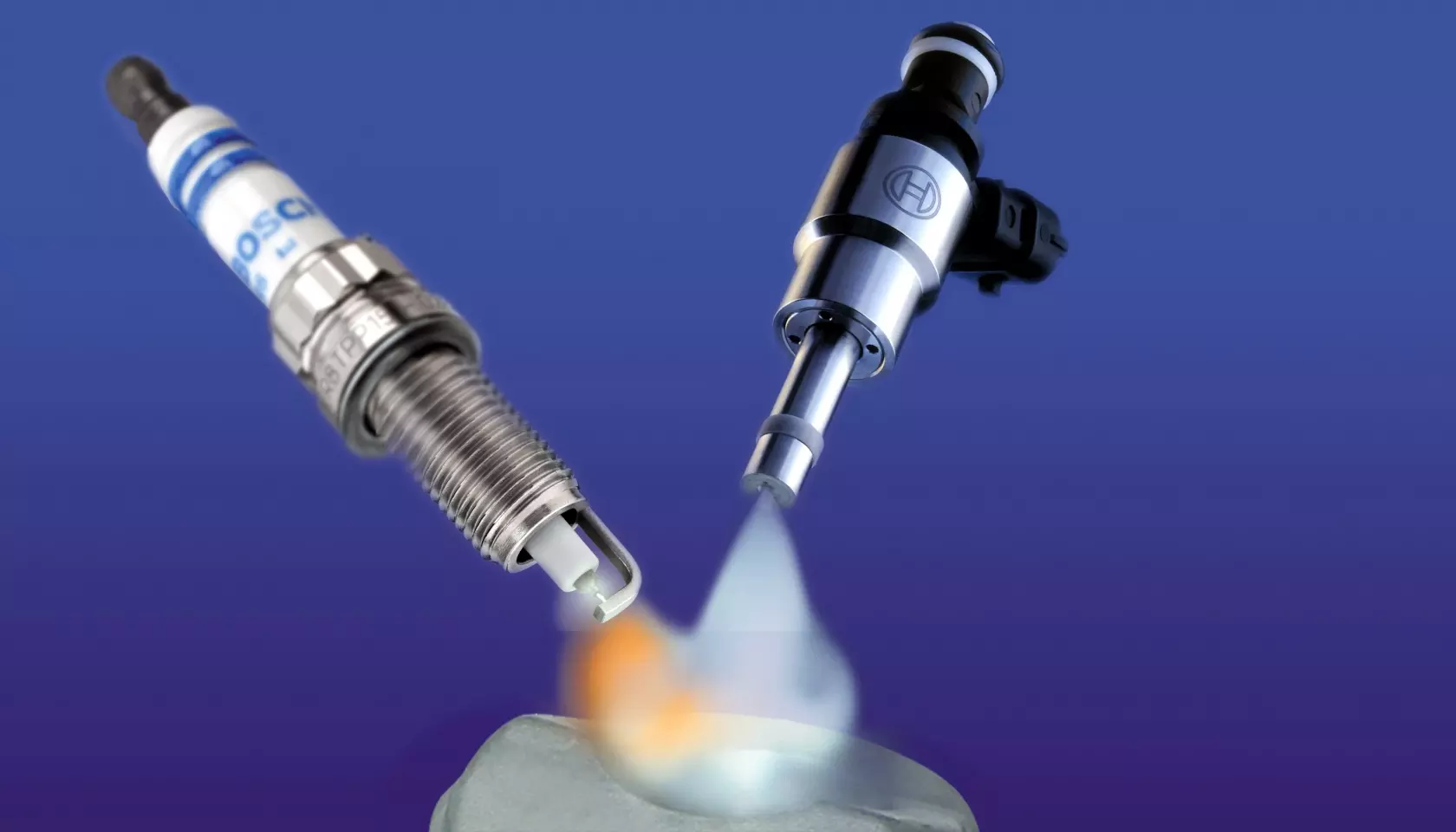 Bosch spark plug in a direct petrol injection engine
Bosch spark plug in a direct petrol injection engine 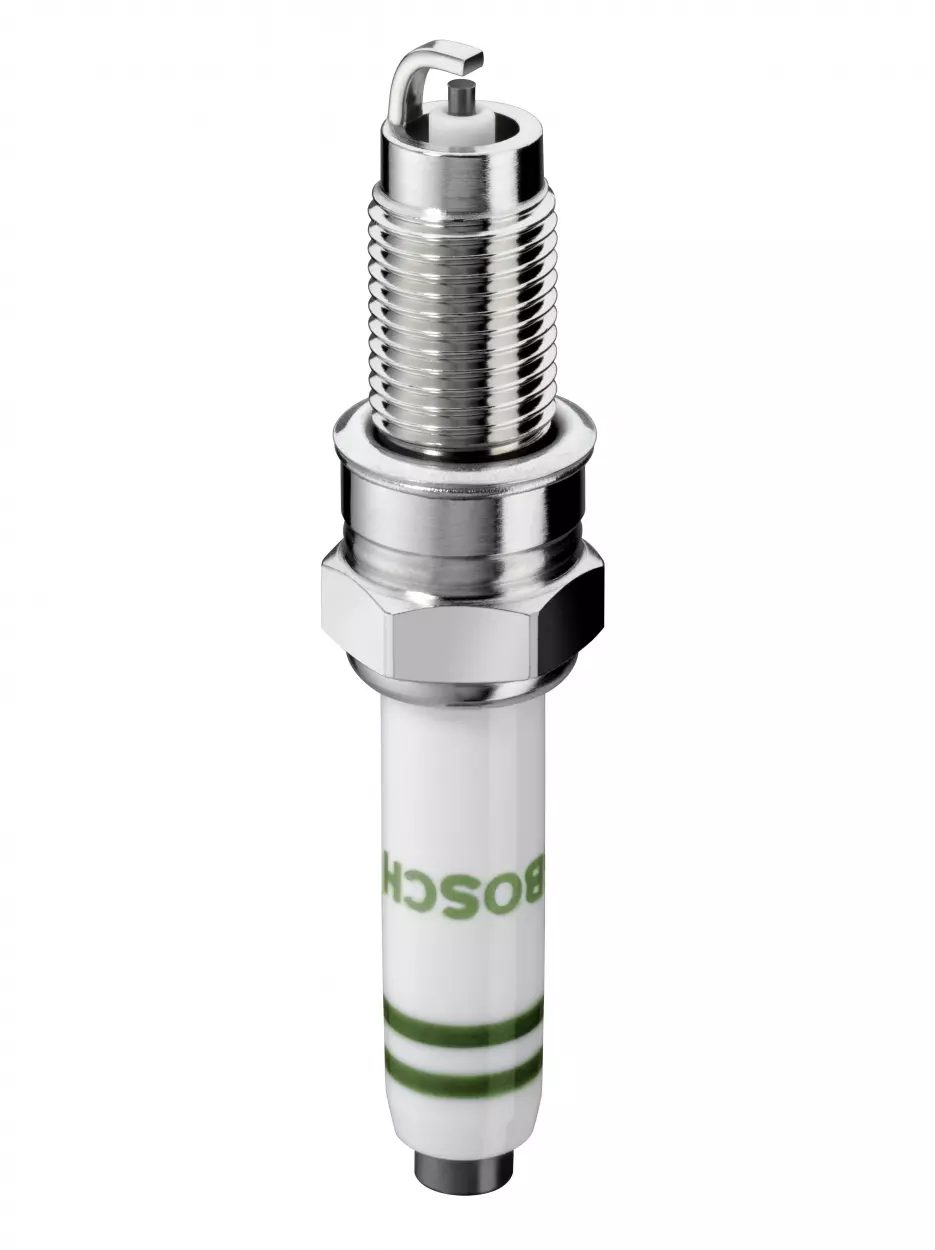 Thanks to using a different electrical connector, Bosch spark plug used in Volkswagen up!’s engines has a longer insulator
Thanks to using a different electrical connector, Bosch spark plug used in Volkswagen up!’s engines has a longer insulator 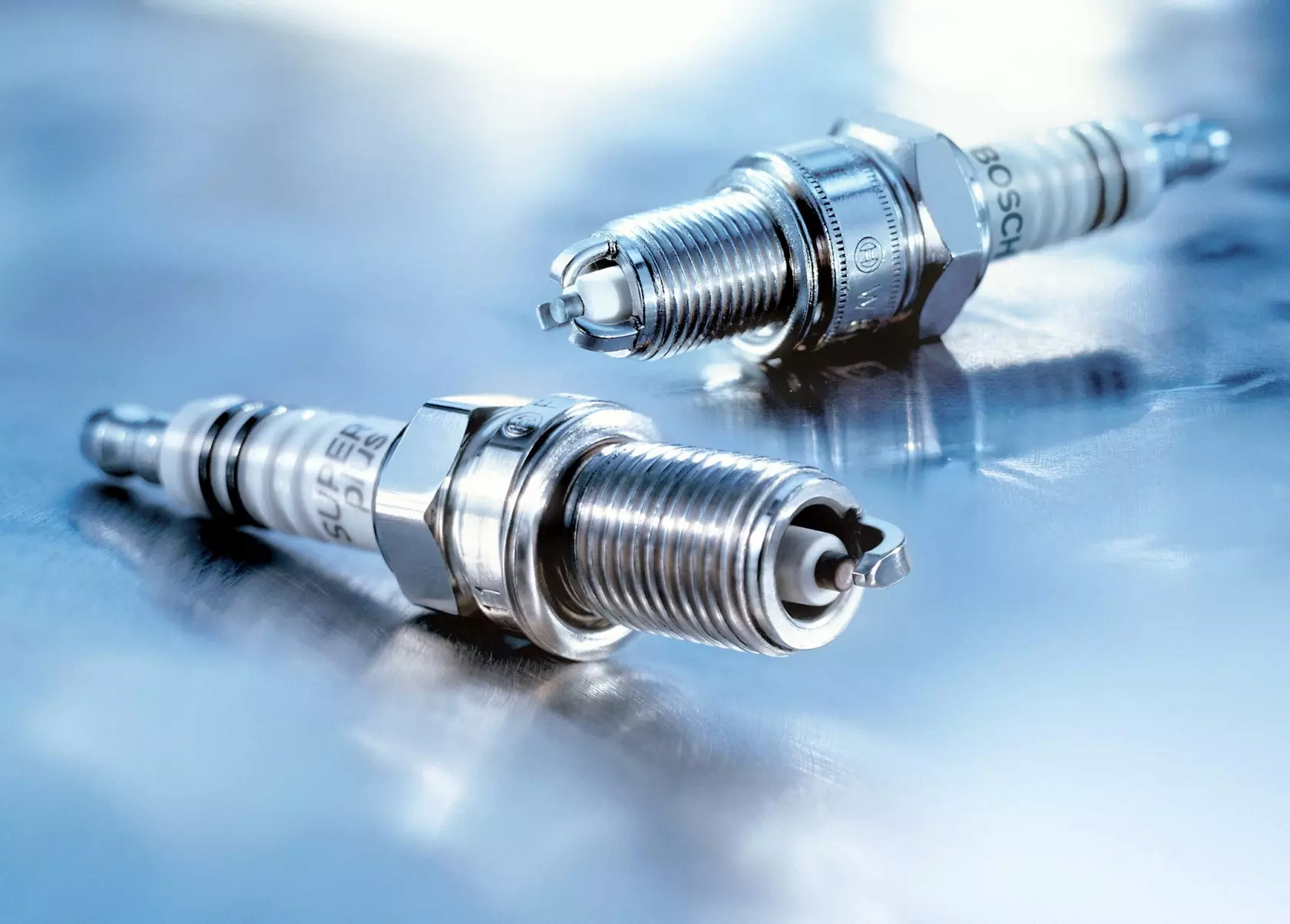 Bosch Super Plus spark plugs
Bosch Super Plus spark plugs  That’s how a spark plug should look like. The insulator’s color should be something between gray-white and yellow-gray
That’s how a spark plug should look like. The insulator’s color should be something between gray-white and yellow-gray 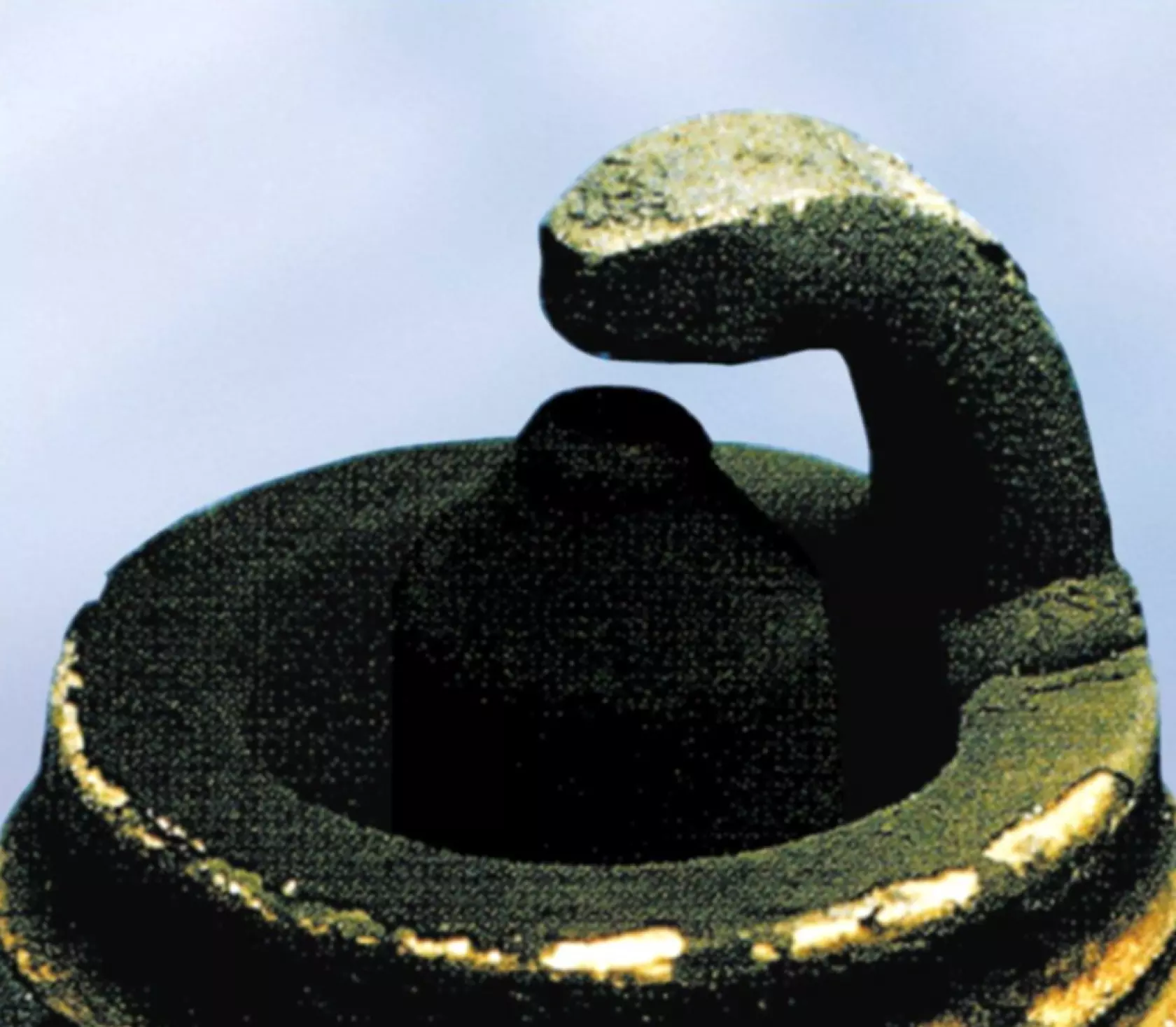 Insulator nose, electrodes and spark plug housing covered with a velvet-like matte coating. It’s the effect of too rich fuel-air mixture. This condition may cause irregularities in the ignition process and problems with starting the engine
Insulator nose, electrodes and spark plug housing covered with a velvet-like matte coating. It’s the effect of too rich fuel-air mixture. This condition may cause irregularities in the ignition process and problems with starting the engine  Insulator nose, electrodes and metal housing covered in oily coating of soot or oily carbon deposits indicate that too much oil finds its way to the combustion chamber. This condition may cause improper ignition and problems with starting-up the engine
Insulator nose, electrodes and metal housing covered in oily coating of soot or oily carbon deposits indicate that too much oil finds its way to the combustion chamber. This condition may cause improper ignition and problems with starting-up the engine 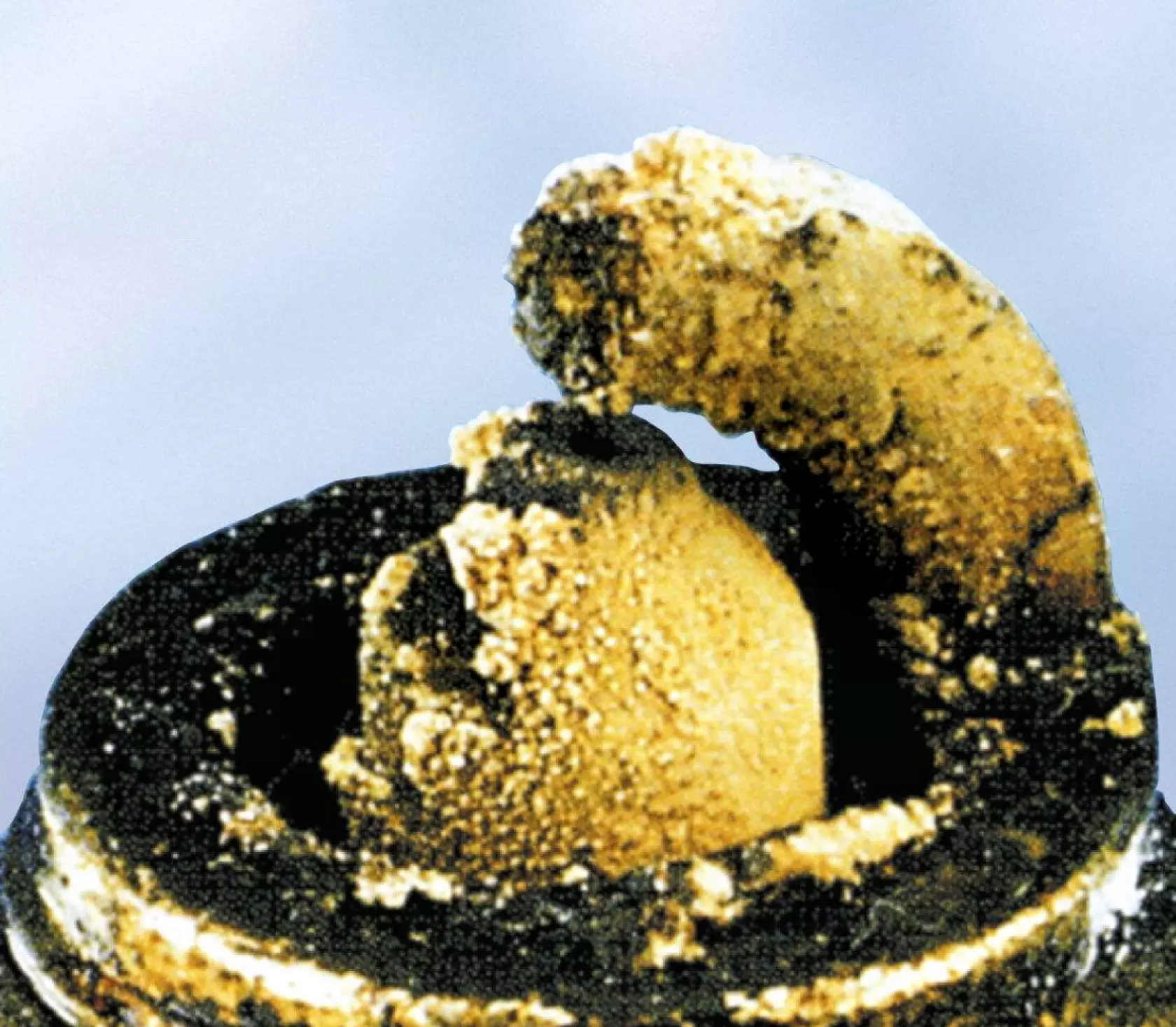 Insulator nose, the space between the nose and the housing, as well as the ground electrode coated with thick ash sludge from combustion of oil and fuel additives. These deposits may cause spontaneous combustion
Insulator nose, the space between the nose and the housing, as well as the ground electrode coated with thick ash sludge from combustion of oil and fuel additives. These deposits may cause spontaneous combustion 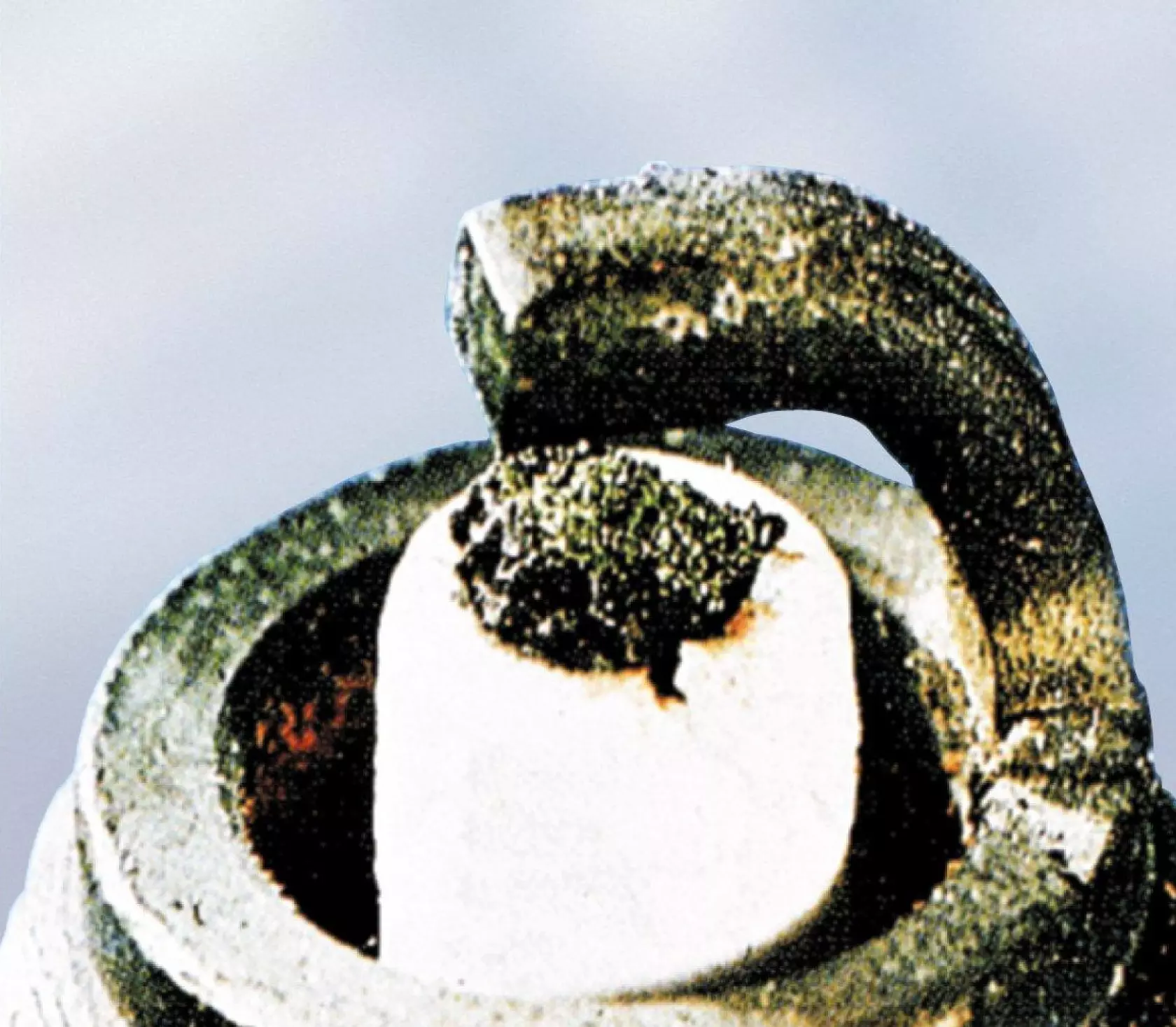 Central electrode partially fused, the tip of the insulator nose has spongy consistence. This indicates thermal overload of the plug as a result of spontaneous combustion and may result in irregular ignition
Central electrode partially fused, the tip of the insulator nose has spongy consistence. This indicates thermal overload of the plug as a result of spontaneous combustion and may result in irregular ignition 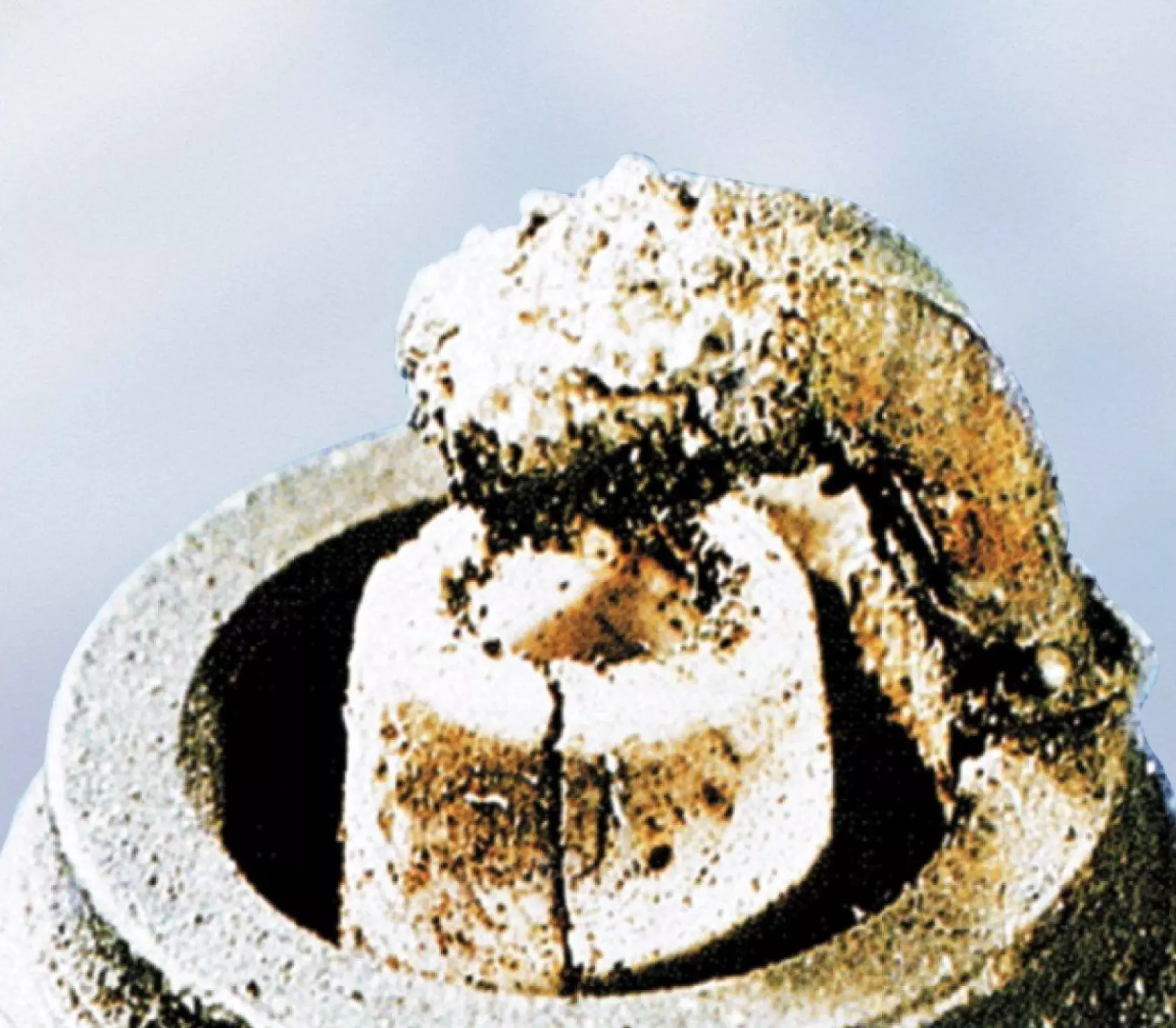 Central electrode fused, ground electrode (side electrode) also severely deformed, which indicates thermal overload of the plug as a result of spontaneous combustion and may result in irregular ignition
Central electrode fused, ground electrode (side electrode) also severely deformed, which indicates thermal overload of the plug as a result of spontaneous combustion and may result in irregular ignition 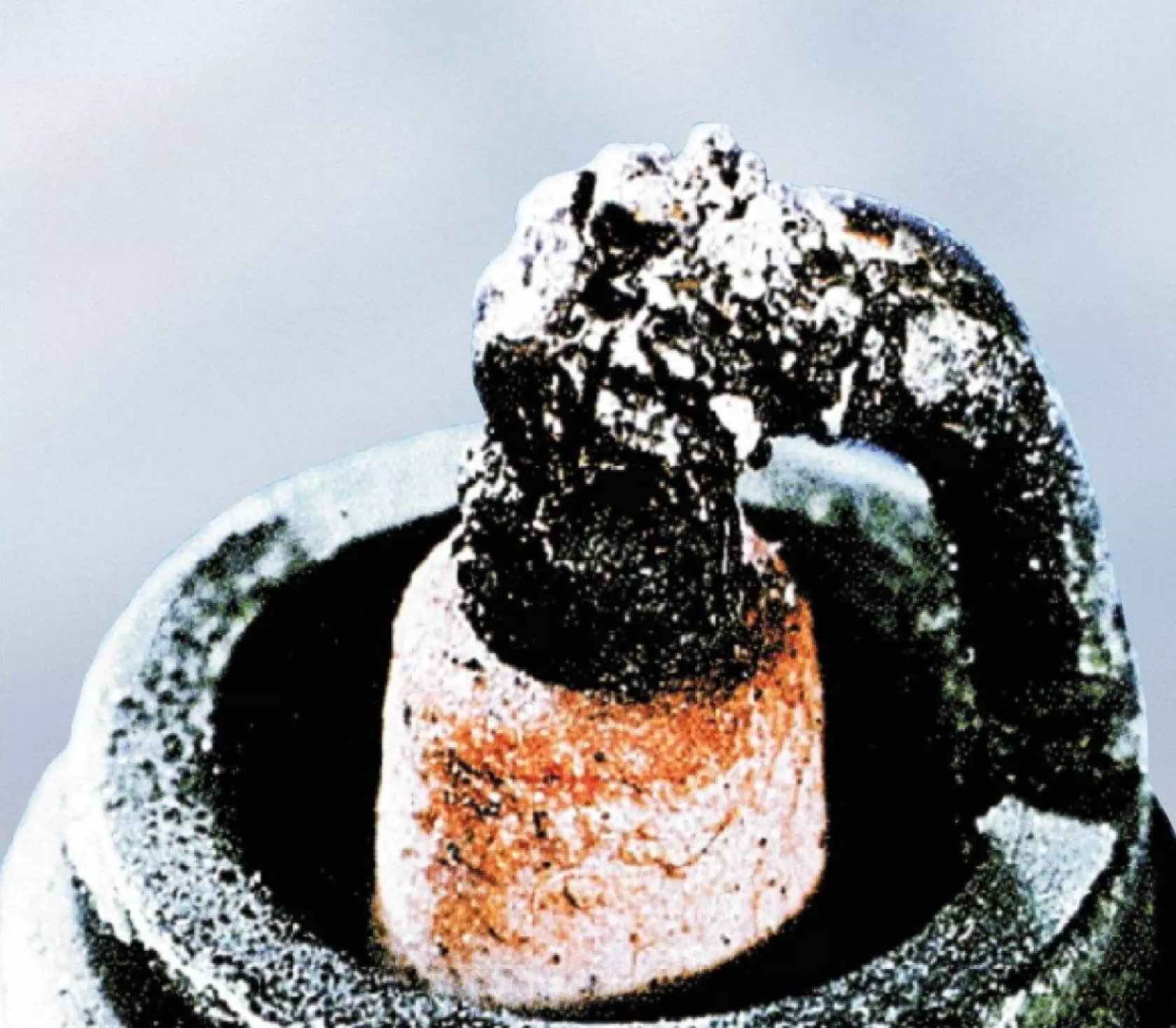 If electrodes are melted together, it also indicates that thermal overload of the plug occurred as a result of spontaneous combustion
If electrodes are melted together, it also indicates that thermal overload of the plug occurred as a result of spontaneous combustion  Heavy wear on central electrode as a result of extended operation time. Increasing the gap between electrodes causes that the ignition voltage is not sufficient to produce a spark, which may result in problems with starting the engine
Heavy wear on central electrode as a result of extended operation time. Increasing the gap between electrodes causes that the ignition voltage is not sufficient to produce a spark, which may result in problems with starting the engine 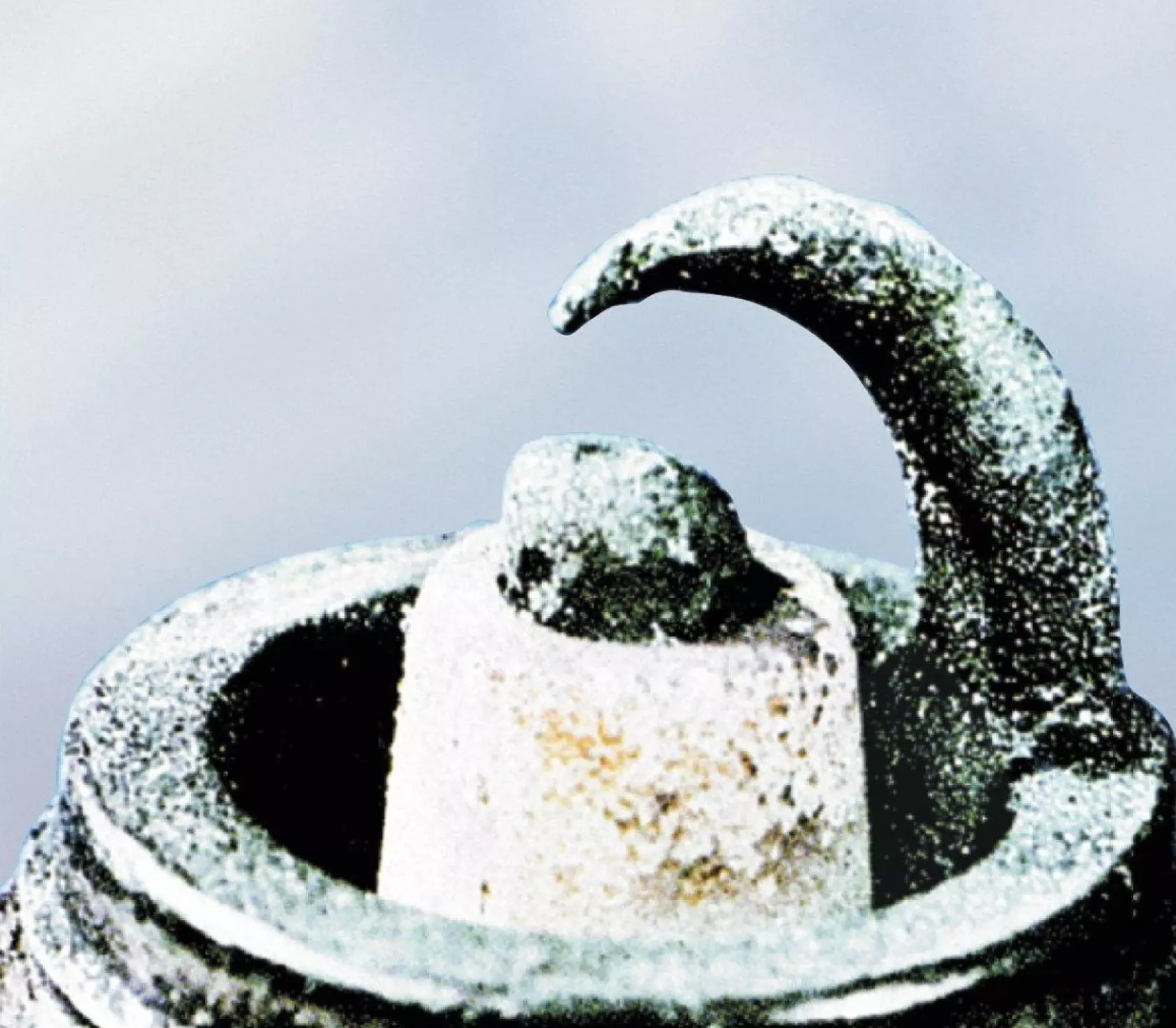 Heavy wear on the ground electrode may be due to the use of aggressive additives in fuel and engine oil (it’s not a result of thermal overload). The damage may be the cause of irregular ignition – especially when accelerating – and problems with starting the engine
Heavy wear on the ground electrode may be due to the use of aggressive additives in fuel and engine oil (it’s not a result of thermal overload). The damage may be the cause of irregular ignition – especially when accelerating – and problems with starting the engine 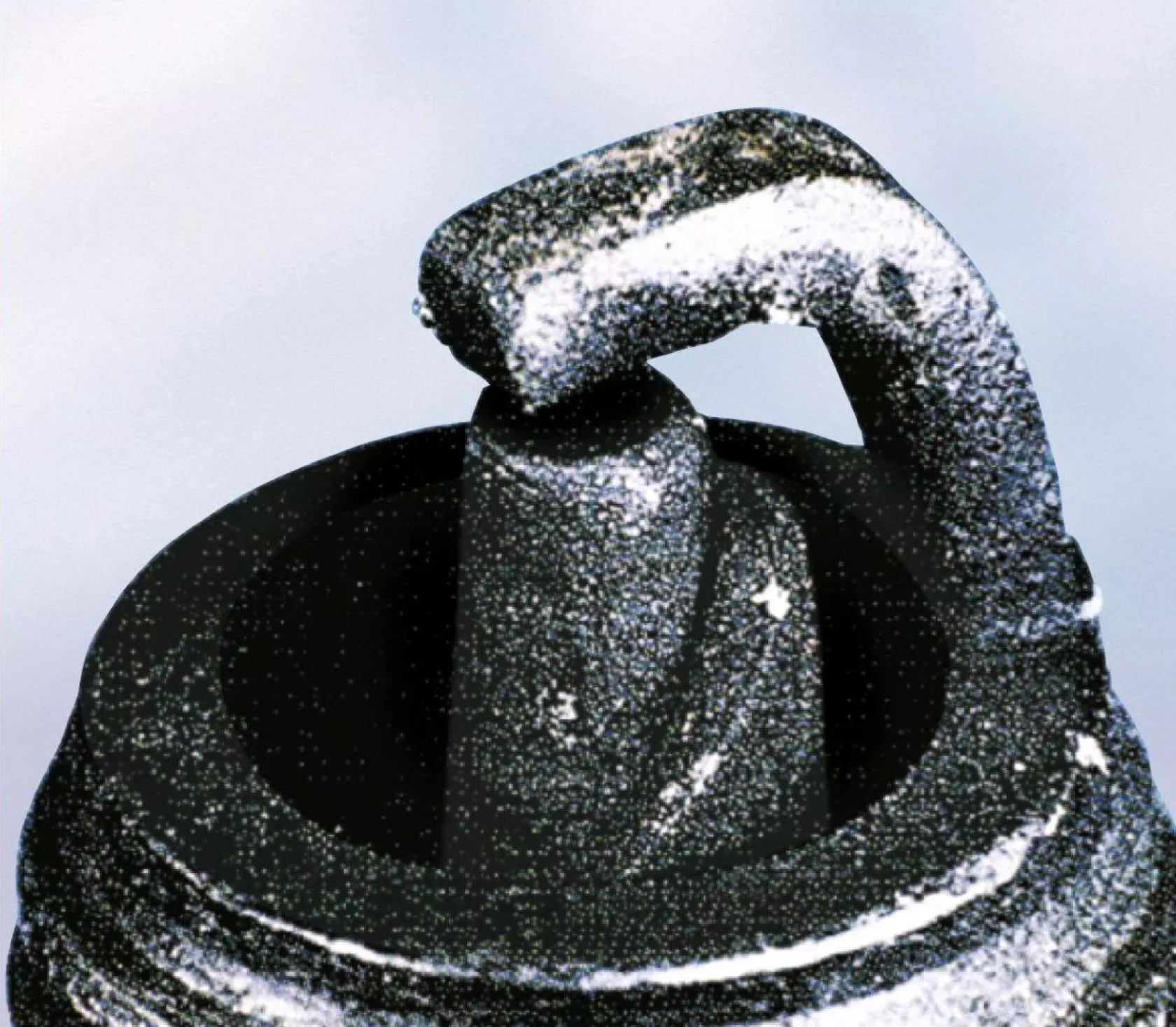 Rupture of the insulator nose occurs mostly as a result of mishandling of the plug. Sometimes it may happen as a result of deposition of carbon formations between the central electrode and the insulator nose, and also as a result of corrosion of the central electrode due to prolonged use. This damage causes irregular ignition because of spark-over in places where the air-fuel mixture has limited access
Rupture of the insulator nose occurs mostly as a result of mishandling of the plug. Sometimes it may happen as a result of deposition of carbon formations between the central electrode and the insulator nose, and also as a result of corrosion of the central electrode due to prolonged use. This damage causes irregular ignition because of spark-over in places where the air-fuel mixture has limited access 


















The plug is the most loaded part of the ignition system due to direct contact of electrodes with hot combustion gases, especially in an engine powered by LPG, wherein the conditions are even more unfavorable. It’s because the nature of combustion process in an LPG engine differs from the same process in petrol-powered engines.
The history of spark plugs
The history of spark plug dates back many years before the first combustion engine was built. How is that even possible? At the end of the seventeenth century, Dutch physicist and mathematician, Christiaan Huygens, invented a fuse ignition machine that ran on gunpowder, and thanks to this machine, he was able to obtain mechanical energy. It could therefore be claimed that the spark plug comes in a straight line from… a fuse.
With the development of natural science and the discovery of electricity, research and experimentation took on momentum. 100 years later, an Italian physics teacher was experimenting with detonating gases (explosive gases that are created from electrolysis of water!). He caused an explosion by an electrical spark. These experiments clearly mark the beginnings of the electric ignition of gas-air mixture. The breakthrough came in 1860, when an inventor called Étienne Lenoir, Belgian native living in France, built a single cylinder, two-stroke internal combustion engine fueled by town gas (coke). The motor powered a simple vehicle that managed to go for 11 kilometers between Paris and Joinville-le-Pont. It’s also worth mentioning that one of the first vehicles with a combustion engine was powered by gas! For the purposes of this experiment, a remote ancestor of modern spark plug was created. Since its lying single-cylinder did not use compression and reached only 80 rpm, heat load, mechanical load and electrical load of spark plugs was small. Therefore, Lenoir’s invention was not really complicated.
A quarter of a century later, Karl Benz manufactured his own spark plugs used in his buzzer-ignition engines. Its work was based on continuous and uncontrolled spark-over between electrodes, causing ignition of air-fuel mixture. A few years later, Gottlieb Daimler managed to construct a high-speed engine with hot-bulb ignition, which was commonly used for some time. This time, the ignition did not arise from electrical discharge. It was not until the early twentieth century that a German industrialist and inventor, Robert Bosch, helped the spark plug obtain current shape and operating methods. All this thanks to a high-voltage battery ignition, which turned out to be the most reliable solution.
In 1902, Bosch started production of spark plugs. An interesting and little-known fact is that Louis Renault – French automotive pioneer – had his share in the whole process, as he came up with the idea to equip the plugs with a thread and screw them into the engine chamber. Another important moment in the history of spark plugs was the introduction of spark plug heat factor by Bosch in 1925. This enabled standardization and common taxonomy of spark plugs, and mass production of plugs with different properties.
The insulator of the plug as we know it today was first made of French chalk, then of mica and porcelain. The only important structural change before 1910 was flanging the rim of the insulator and screwing central electrode into the threaded hole of the plug’s slide. Another material used to create insulators was ceramic material called soapstone. Its era, however, was short. It was quickly (1931) made obsolete by another ceramic mixture – piranit. Even today, the ceramic insulator works best and it’s able to withstand high operating temperatures without being deformed and still perform its tasks.
The spark plug works when spark-over occurs between two electrodes: the inner one, usually made of copper, and the outer one. The number of outer electrodes is substantially the same – between one and four. In the 1920s, American company Champion introduced plugs with two outer electrodes in industrial engines. Ten years later, the company increased their number to four! Over time, and especially with the development of motorsports, plugs underwent further modifications that increased their durability, the ability to self-clean the electrodes, and guaranteed the strongest spark. Most treatments were about using unusual materials. In sports cars, plugs with silver and platinum electrodes were introduced. Thanks to this, durability of plugs rose to 100 thousand kilometers. So today, plugs with electrodes coated with a thin layer of platinum are used more and more. In the 70s, the copper core was put forward to the combustion chamber. It ensured a more reliable ignition and more effective self-cleaning of the plug at higher temperatures.
Heat factor is crucial
The main parameter that characterizes spark plugs is the heat factor matched to a specific engine (its work load). It specifies – by means of a numeral index – the ability of the spark plug to discharge and dissipate heat that is transferred from combustion chambers. Each engine manufacturer specifies this parameter by marking which plugs are suitable for each kind of engine. Higher heat factor translates into greater ability to remove heat, which means that this kind of plug may be used in a more loaded engine without the risk of causing spontaneous combustion. Such plugs (commonly referred to as cold-running spark plugs) are harder to heat up, but their ability of self-cleaning is not that great (more carbon deposits). Lower heat factor means that the plug has smaller ability to remove heat (heats up faster), but has greater self-cleaning ability. Plugs of this type (commonly referred to as hot-running spark plugs) are used in engines with smaller compression ratios and lower power, which have lower combustion temperatures.
Appropriately selected spark plug heat factor allows the plug to operate in temperatures between 500 and 8500 C. The first value ensures that the plug will self-clean, that means it will burn all impurities (hydrocarbons and soot) that precipitate on the surface of the insulator. When temperature goes down, impurities will deposit in the insulator, and thereby the surface resistance falls and a so-called conductive bridge is formed. But when the temperature of the electrodes extended into combustion chambers goes above 8500 C, it may lead to spontaneous combustion and uncontrolled burning of the blend. Both occurrences in the context of EOBD systems used in modern cars are unacceptable. That’s why selecting spark plugs suitable for a specific type of a car and replacing them periodically according to the manufacturer’s recommendation is essential for correct engine work, especially if the engine is adapted to gas supply.
LPG combustion process
Gas-air mixture, in contrast to fuel-air mixture, burns in an engine at lower speed. It’s one of the reasons why LPG-powered engines have slightly less power (lower pressure rise in the long term).
Later generations of gas supply systems make this loss such small that it’s imperceptible to the user. Such way of combusting gas-air mixture causes the engine to be much more flexible than when it’s fueled with petrol. But a longer combustion process also means that chamber walls are exposed to a longer period of contact with hot exhaust gases. It’s one of the problems that must be faced when a spark plug is screwed into the head. Another one is impeded ignition, resulting from air-gas mixture’s resistance that is about 30% higher.
Single- or multiple-electrode?
Using spark plugs causes them to wear due to spark erosion. This leads to gradual removal of material from electrodes, thus enlarging a gap between them. It always happens, but we can still try and prevent it and extend spark plugs’ durability. One of the things we may do is use multi-ground spark plugs in which discharge is distributed between different lateral electrodes. But these plugs are not recommended for gas-powered engines due to lower ignition energy which is spread across a larger number of electrodes. Gas engines should be equipped with single-ground spark plugs, preferably those with a slightly smaller gap, which ensures greater discharge energy. To make them more durable, other (better) materials are used.

You may also find these interesting:
 loading results...
loading results...
